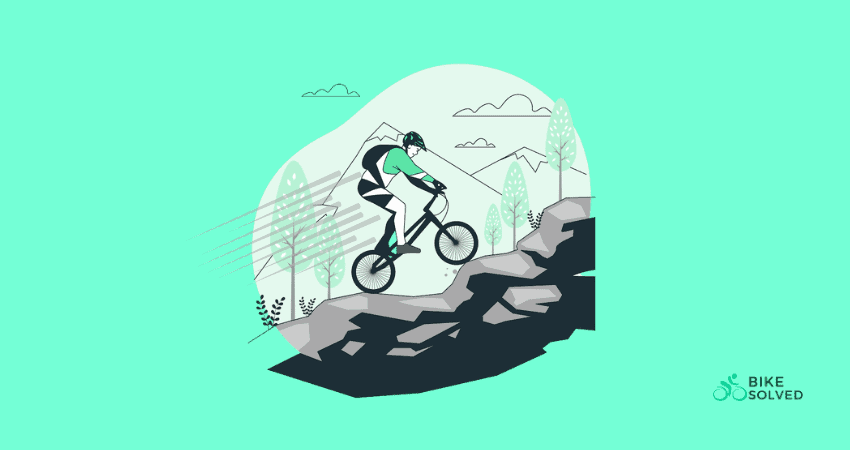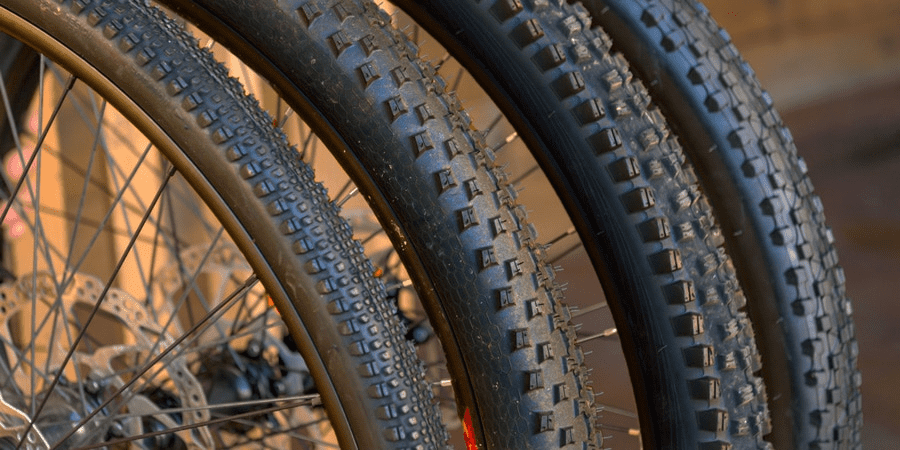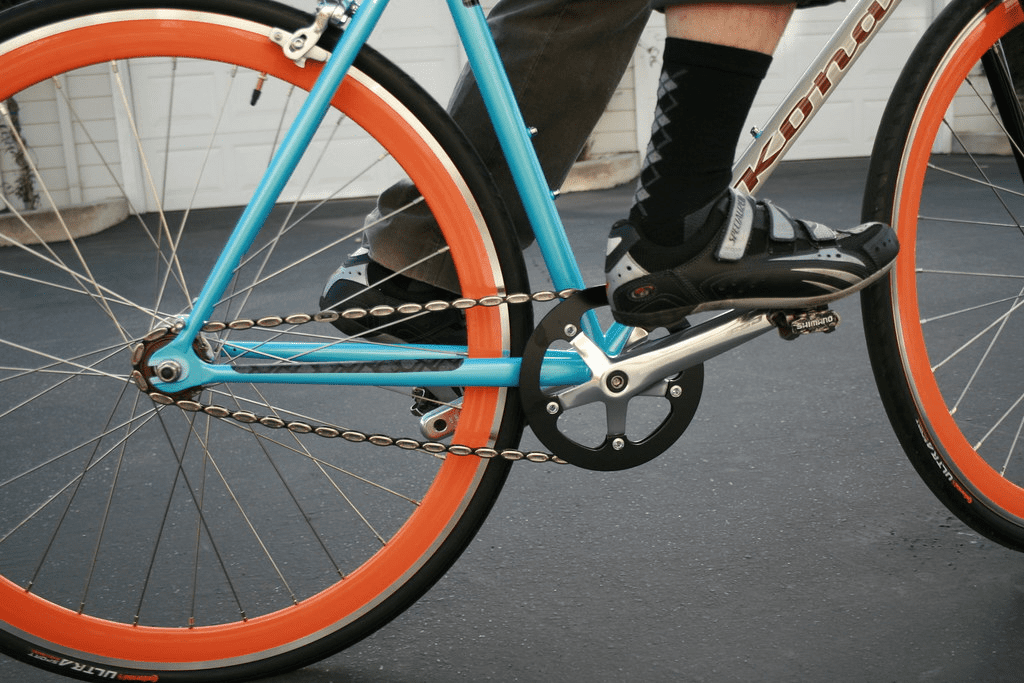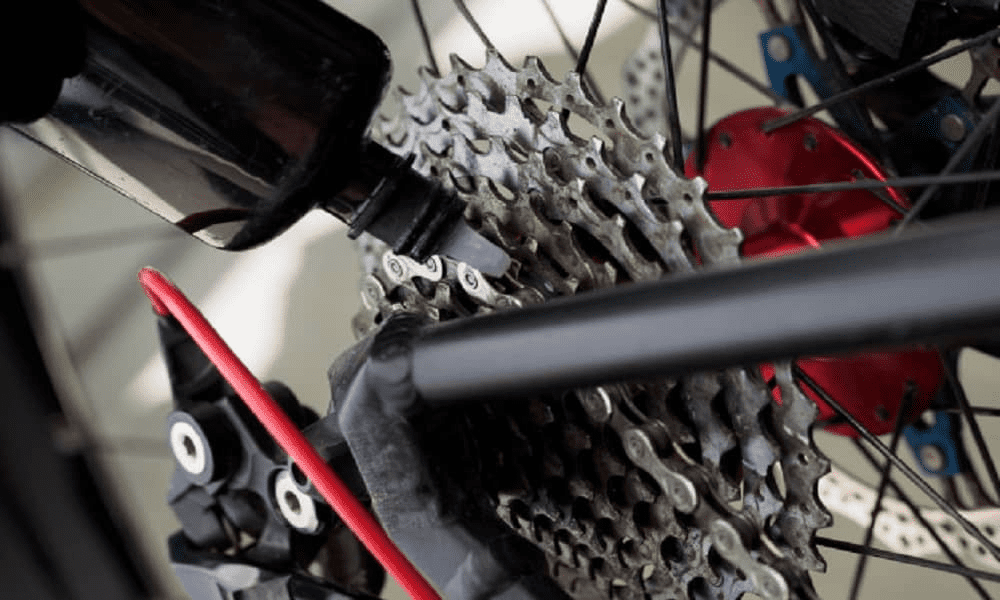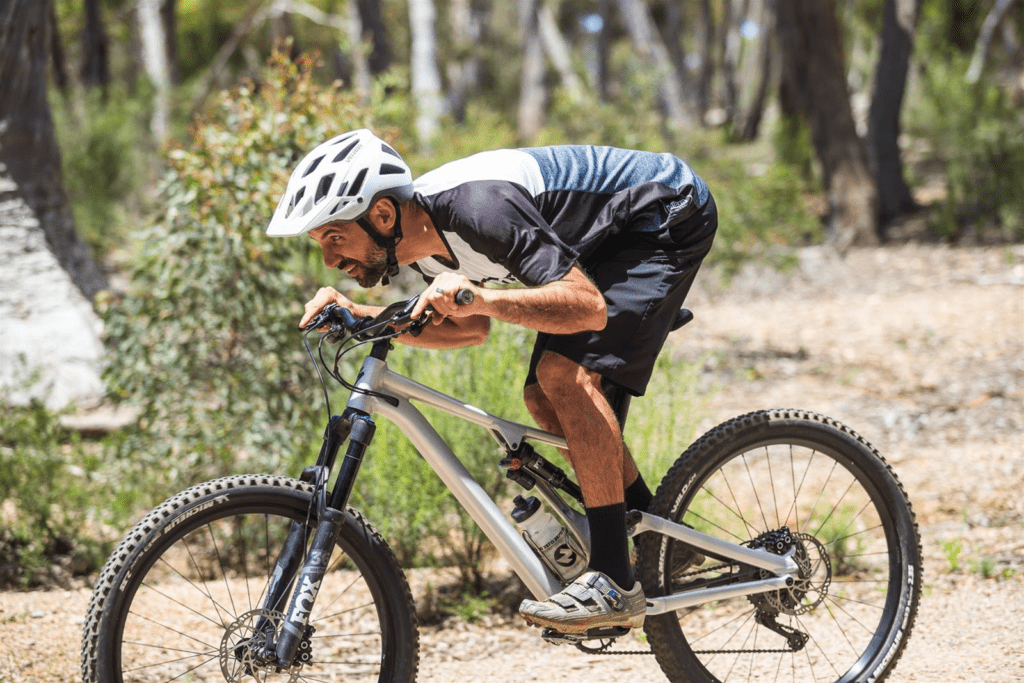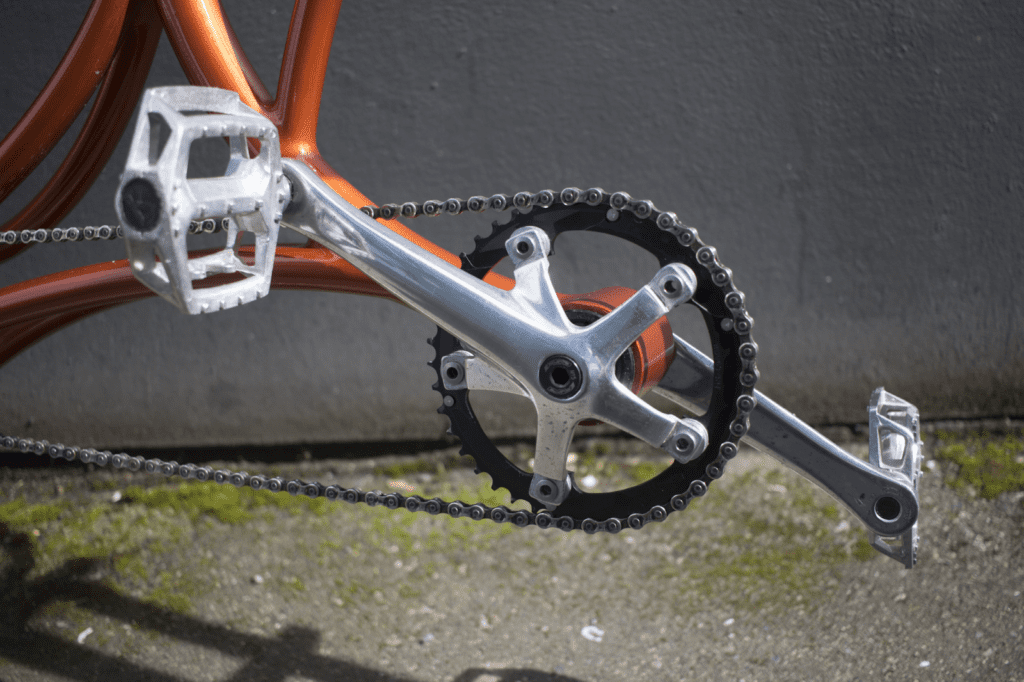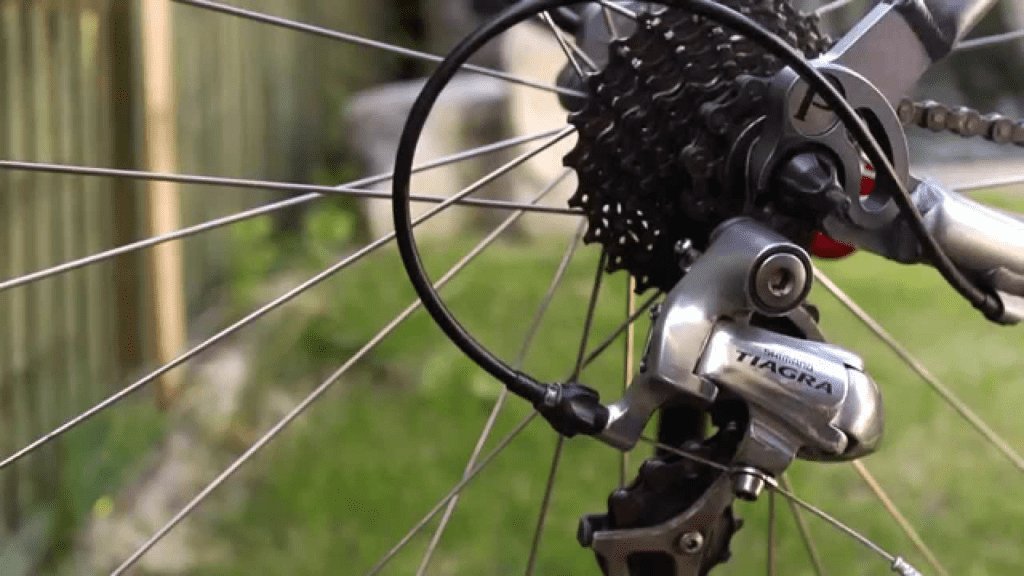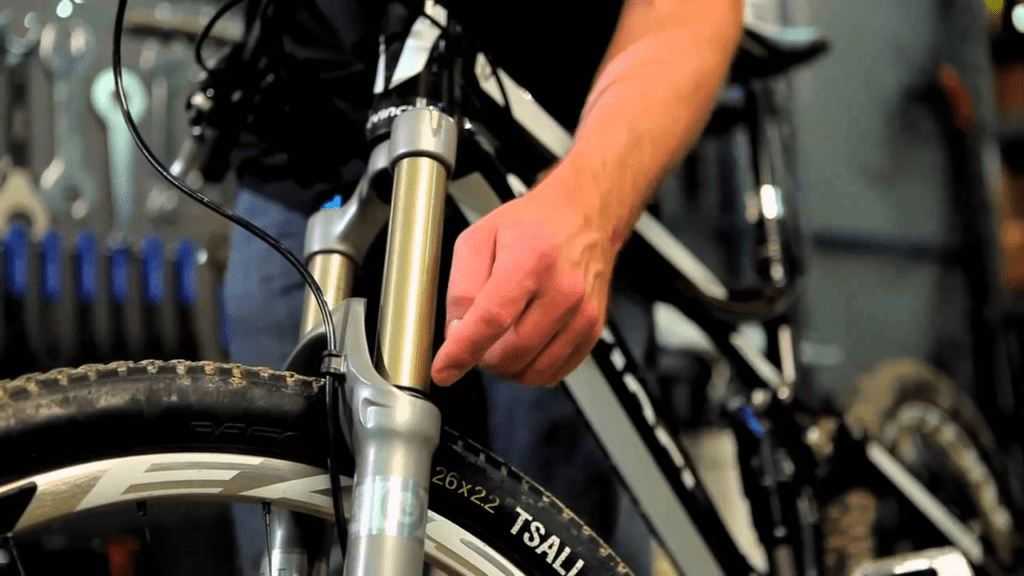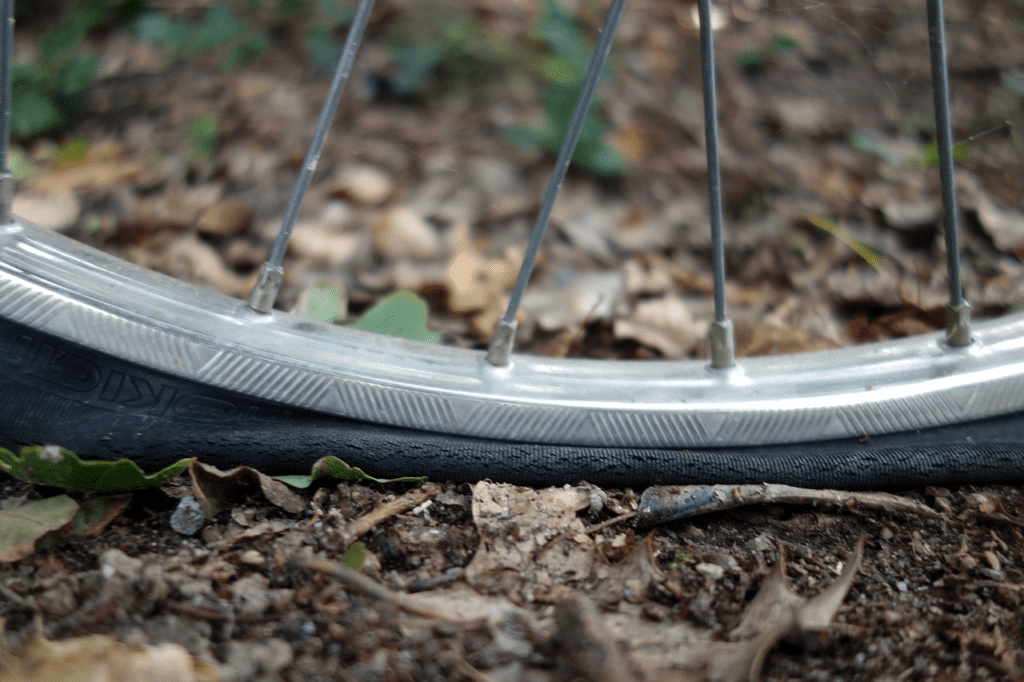Are you fed up with how slow and heavy your mountain bike feels? Or wondering if it’s possible to go faster on your existing mountain bike? Well, I’m sure you are not the only mountain biker trying to get the most out of mountain bikes.
Who doesn’t want to be able to ride at higher speeds on rugged terrains? Most mountain bikes may promise you a comfortable ride, but they fail to prioritize your speed. This may lead you to wonder if replacing your existing mountain bike with a faster one is the only solution.
What if I tell you that it is possible to go faster while mountain biking just with a few tweaks on your current bike? I”m sure you’ll be surprised and intrigued at the same time. If you wish to be aware of these tips and tricks, read this guide till the end and know how to make mountain bike faster.
Bikesolved.com is readers supported, you may find Amazon affiliated links on this page, that pays us commission for recommending products at no extra cost to you.
What is a good MTB average speed?
A good MTB average speed varies according to the terrain you are riding on. Since mountain biking is all about riding off-road on complex topography and uneven trails, you obviously can’t expect your mountain bike to perform as well as it does on smooth city roads. This is also the reason why they are designed differently than road bikes or hybrid bikes.
If you are riding your mountain bike on rugged terrains with sharp bends, you may be able to travel at 4-8 mph of speed. This bike speed would apply to most technical terrains that cover difficult ascents, steep uphill sections, and other bumpy surfaces, as they tend to significantly slow down your average cycling speed.
If you are a competitive downhill mountain biker, you may be able to go as high as 20 mph. In fact, on the steepest sections, you can average up to 50 mph. Riding your mountain bike on pavements or smooth roads with a flat elevation profile will be very different. If you ride on paved and flat greenway paths, you can expect 14-18 mph of average cycling speed.
8 Ways To Make Mountain Bike Faster
1. Opt for tires with lesser tread
The type of tires your mountain bike is equipped with plays a huge role in determining your ability to attain higher speeds. Most mountain bikes are equipped with large, wide, and heavy tires for tackling rugged terrains.
It is evident that these knobby tires are also aggressively-treaded. These groove patterns are undeniably crucial for great traction, but you cannot run from the fact that they slow down your speed.
If you are a beginner who has just started mountain biking, you may want your mountain bike to retain grip over technical surfaces to avoid slipping out off the trail. However, if you have gained enough experience and wish to maximize your speed while riding off-road, you may want to opt for mountain bike tires with lesser tread.
Tires with smaller and closer knobs will be ideal to improve your speed. If you plan to confine your trails to pavements and flat city roads, you can even replace your mountain bike’s wide tires with narrower ones. Slick tires will not have enough area to maintain proper contact with your riding surface, eventually enhancing your speed.
This is why you will find a road bike to be equipped with narrow tires. However, I would suggest you not switch to such thin tires if your terrains still include rough and rocky surfaces. Having wide tires with lesser tread will do the job of enhancing your speed and maintaining proper contact with the terrain.
2. Use lightweight clipless pedals
Trail riding involves traveling across uneven surfaces and complex trails that may prevent your foot from staying in place on the pedals. Such a situation will decrease your ride quality and speed.
To avoid this from happening, you can switch to clipless pedals, which are super light in weight. You may have been using flat pedals, especially if you are a novice rider. I understand that it is difficult to make an immediate switch as it is slightly uncomfortable to be clipped into your mountain bike in the beginning.
However, if you are trying to move faster on your mountain bike, I will suggest you make this switch by using clipless pedals as they excel in ensuring a powerful stroke. With clipless pedals, you are able to cover longer distances, eventually giving a boost to your speed.
If you are moving down the hill, you may not be benefitted from this consistent stroke efficiency as you barely pedal at that time. Even so, you will notice how you do not have to be worried about your foot slipping off the pedal as it is clipped.
You will be able to balance better, no matter how rough your terrain is. With better balance and stability, your mountain bike will become maneuverable. Once you are able to control your bike easily, you will be able to travel faster.
You may still ride your mountain bike with flat pedals when you feel like it. In fact, using them every now and then will improve your riding technique. But if your topmost priority is speed, riding with lightweight clipless pedals will maximize your performance.
3. Ensure that your drivetrain is lubricated
It is important for the componentry of your mountain bike to be well-lubricated if a higher speed and faster mountain bike are what you are aiming for. If the components are well-oiled, friction will be less, eventually saving energy.
Your pedaling effort will directly transfer to the wheels to ensure maximum speed. Along with the speed and higher efficiency of performance, an appropriately-lubricated drivetrain will also be saved from wearing out.
Friction not only prevents your mountain bike from attaining higher speeds but also affects the working of your drivetrain. Lubrication will prevent your drivetrain from wearing out, eventually allowing it to run smoothly.
You may choose the right kind of lubricant as per the weather conditions. A dry lube is better suited for dry weather conditions, whereas using wet lubes for wet environments will be the right decision. Apart from the drivetrain, you should ensure sufficient lubrication for various other components, including the cassette, derailleurs, and bike chain.
4. Improve the aerodynamics
The reason why road bikes are able to maximize your speed is their aerodynamic structure. Their compact frame geometry is designed to allow a forward-leaning position, which eventually boosts your speed.
The same cannot be said about a mountain bike, as it allows for a comfortable upright posture which may hamper your ability to ride at a faster pace. However, you can always improve the aerodynamics of your mountain bike and give it an aggressive frame geometry. You will have to make it compact to be less affected when your body slices through the wind along with your mountain bike.
You can do this by slightly lowering the height of your mountain bike’s handlebars. When you bring the saddle down, it will further give you a lower profile and ensure minimal wind resistance.
Such a posture may feel a little uncomfortable, especially if you’ve had the habit of the comfortable posture of a mountain bike. Moreover, an aerodynamic position is always less comfortable than an upright one. Your comfort may be compromised, but you will definitely notice enhanced acceleration and speed.
5. Do not ride with worn-out components
The components of a mountain bike tend to deteriorate and wear out over time, especially if you use your mountain bike frequently. It is extremely important to make sure that the componentry of your mountain bike remains top-notch, as it can hamper your speed.
From the chain of your bike to its brake pads, everything should work efficiently and in great condition. A worn-out bike chain could pose a major hurdle when it comes to performance. If the chain of your mountain bike has been stretched, it can deteriorate the working of other components as well.
Replacing a bike chain will be much less expensive than replacing all the other components once they wear out. Therefore, checking the bike chain every now and then should always be one of your priorities.
A worn-out bike chain may also toy with the smoothness with which you are able to shift mountain bike gears. This will eventually slow you down as a stretched chain is not capable of adequately transferring your pedaling efforts to the wheels of your bike. Furthermore, if the bike chain gets dropped, you will have to fix it, which will apparently require you to stop.
This will affect the speed and efficiency with which your mountain bike is capable of moving. All these little things and adjustments can definitely make a huge difference in your speed and performance. You may be able to spot a worn-out and deteriorated bike chain while lubricating components.
6. Configure the derailleurs
Consistent gear operations have a huge role to play when it comes to the performance and speed of your mountain bike. If your cable tension and derailleurs are not adjusted properly, you will not be able to enjoy precise shifting of gears. Therefore, you will need to tune them or get them adjusted from a local bike shop.
Being able to smoothly switch between different speed levels is necessary as it makes your mountain bike faster. Therefore, you should properly configure your derailleurs for higher efficiency and speed.
7. Optimize the suspension system
Mountain bikes are equipped with a front suspension fork to absorb all the vibrations and jolts that you may come across while tackling complex topography. If the suspension mechanism of your mountain bike is too soft with a bouncy bike frame, you will have slower rides as a bit of your pedaling effort will be lost.
This may result in comfortable rides, which most mountain bikes prioritize, but it will prevent your mountain bike from being faster. If your bike suspension system is too hard, you may get a beating from the uneven terrains you travel on.
Therefore, removing your suspension forks, especially if you are supposed to travel on bumpy terrains, will not be a good tradeoff just for enhanced speed.
You may tighten your rear shock a bit when you wish your mountain bike to ride at a faster pace. This will lower your comfort, but you can always loosen these shocks again when you plan to ride on rocky terrains.
8. Check the tire pressure
The tire pressure influences the level of contact your mountain bike will have with the ground. You need to look for a middle ground when it comes to the tire pressure, as too much of it can result in negligible grip over the riding surface.
This will not be appropriate while you cover uneven terrains, as off-road riding emphasizes the significance of excellent traction. However, if you lower the air pressure to a large extent, your Mtb tires may become prone to punctures.
Moreover, a lower tire pressure will ensure more grip and contact with the trails. This will slow down your speed, and your mountain bike will not be able to travel at a faster pace due to excellent traction.
This means that you can neither lower the air pressure too much nor bring it up. Your tires need to be appropriately inflated to maintain optimum grip and speed instead of focusing on just one of these aspects. This will not only allow for a comfortable riding experience but also make your mountain bike faster.
Conclusion
If you own a mountain bike, its inability to move at a faster pace may affect you and your riding performance. Once you understand the key features behind a mountain bike being slow, you will be able to tackle these reasons in a better manner.
With the help of this guide, you would’ve come to know that you don’t have to replace your mountain bike to improve its aerodynamics and speed. From frame geometry, size of tires, and riding posture to the suspension system, the design of a mountain bike comes down to a lot of factors.
With a few modifications in these features, you will be able to make your mountain bike faster. Something as simple as configuring the suspension forks or optimizing the tire pressure can boost the speed of your mountain bike.


